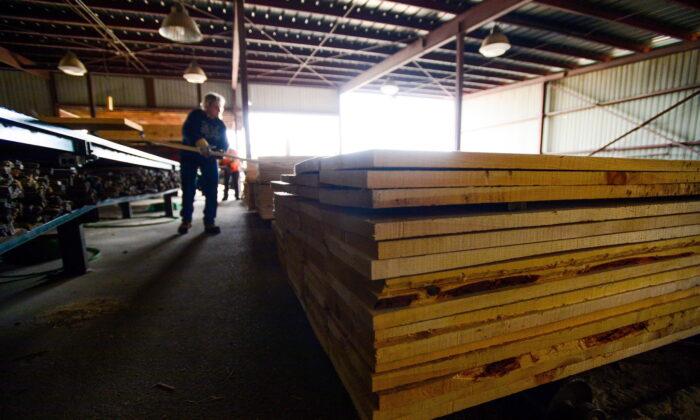Lumber prices have drastically fallen this year as the industry grapples with the consequences of high home prices.
He estimates prices to soon fall to $400 per thousand board feet over the next two months, after which producers will likely restrict production to flush out excess supply.
In an April survey of building products dealers, only 12 percent said that their lumber and wood panel inventories were slightly low to very tight, according to John Burns Real Estate Consulting. This is down from 61 percent from the same time last year.
Canfor, one of the world’s largest lumber producers, recently announced that it would extend a drawdown in its production schedules as the firm deals with a supply glut.
Fears of a softening housing market are affecting the lumber market, with home prices at elevated levels and mortgage applications on the decline.
Based on data from the Mortgage Bankers Association (MBA), mortgage loan application volume fell by 2.3 percent on a seasonally adjusted basis for the week of May 27 compared to the week prior. The unadjusted Purchase index declined by 2 percent from the previous week and 14 percent when compared to the same time last year.
“Mortgage applications decreased to the lowest level since December 2018, as the purchase market continues to struggle with supply and affordability challenges.”
The average interest rate for 30-year fixed-rate mortgages has climbed two percentage points in just five months according to the Federal Reserve Bank of St. Louis. While a year ago, 25 percent of new home sales were priced below $300,000, that number has now fallen to just 10 percent.




